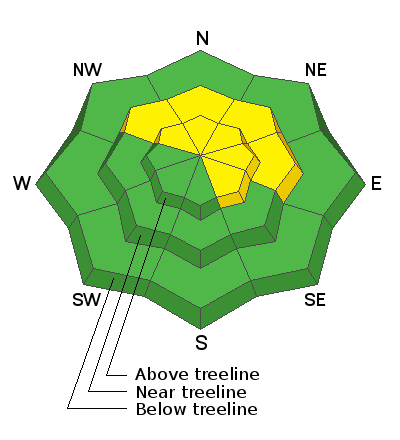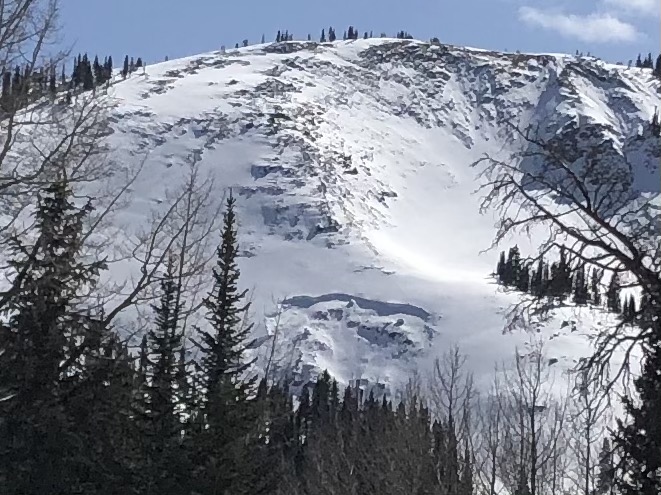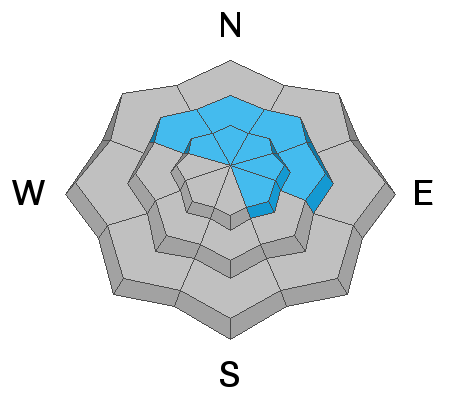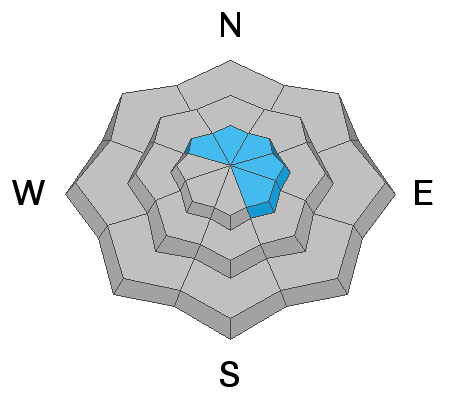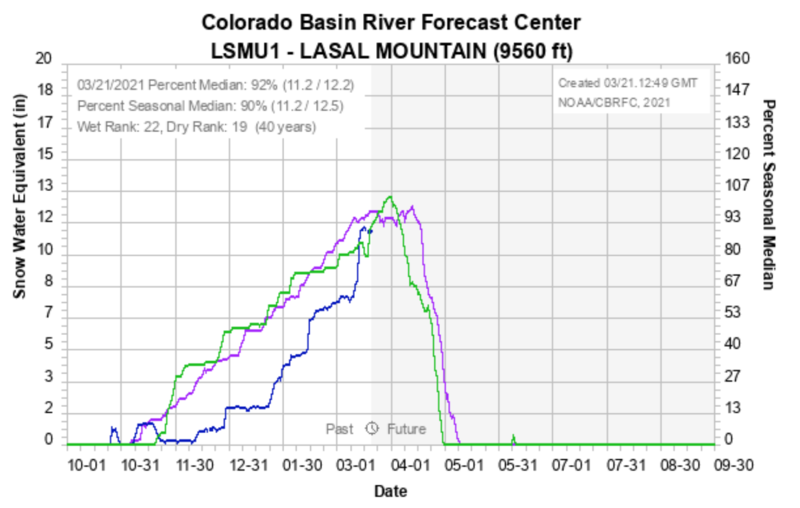The 2021 Spring Awareness Campaign is underway. Help us save lives through avalanche forecasts and education. Consider making a donation to show your support
HERE.
The Geyser Pass Road has been plowed and is down to the dirt in most areas. Patches of ice and snow exist and it turns muddy as the day heats up. All-wheel-drive recommended.
The Lower Utah Nordic Alliance (LUNA) groomed into Gold Basin on Friday.
24 Hour Snow 2" 72 Hour Snow 2" Base Depth in Gold Basin 68" Wind WSW 5-15 Temp 18F
The mountains picked up a couple of inches of snow overnight. Southerly winds cranked in the 20-40 mph range yesterday before backing off around midnight. The passing Pacific trough will continue to deliver unsettled weather to the region for the next 24 hours. Today look for a few light showers and occasional partly sunny skies. Westerly winds will be mostly light with high temps in the upper 20's. Monday looks to be mostly sunny followed by a cut-off low moving into the region on Tuesday and then another system on Friday. None of these systems currently look to be big producers but every little bit helps.
Snowpack Discussion
A few inches of new snow won't do much to soften the range of crusted surfaces underneath, but on sheltered northerly aspects where the underlying snow was still dry, it may provide for a nice refresh. Time and warm temperatures have helped the snowpack adjust to the large snow load we received last weekend but it's still possible to trigger a deep and dangerous avalanche on a buried persistent weak layer of sugary, faceted snow. This weak layer exists on slopes that face NW-N-E-SE, and thin snowpack areas consisting of steep, rocky terrain are the most likely trigger points.
In our travels up to Geyser Pass on Friday, Brian Murdock and I observed this avalanche from the March 13 cycle on a north aspect at around 11,000'. A nasty pocket like this could ruin your day or your life. Note the complex and featured terrain punctuated with rocks. The "pockety" nature of these avalanches leaves you uncertain as to where they may be found, but thin snowpack areas around steep and rocky terrain are the most likely. Steep convexities are also areas of concern.

